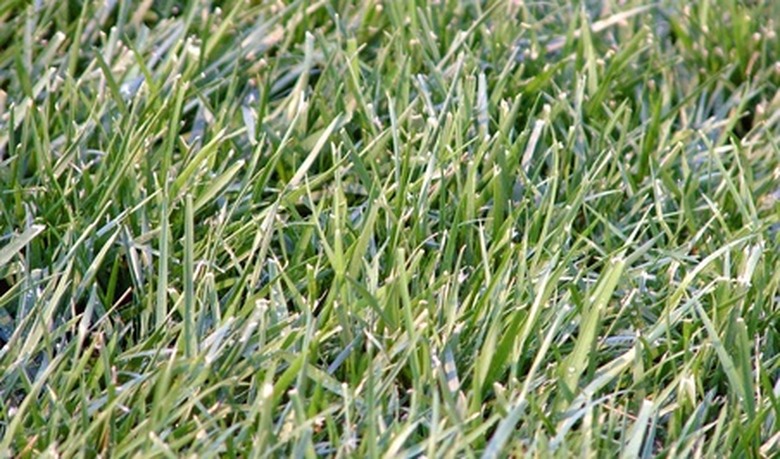How To Grow A Lawn From Poor Soil
Things Needed
- Rototiller
- Rake
- Herbicide
- Soil
- Sand
- Compost
- Fertilizer
- Conditioner
- Broadcast spreader
- Grass seed
- Mechanical or hand spreader
- Sprinkler
- Water
When growing grass, it is important to have fertile, loose soil. Poor soil can make it difficult for grass to sprout because it does not contain the nutrients that seed needs to grow successfully. Plan to amend poor soil and plant grass the same day or in a two-day period. It is best to tackle the project when it's dry outside or you risk washing away the grass seed. Windy weather is also problematic because the seed can blow away. Plant grass seed in the spring or summer so it has time to root before winter sets in.
Step 1
Get rid of any debris that will prevent the grass seed from sprouting. Seed needs contact with the soil to germinate. Anything that ruins the clean slate needs to be picked up. If you notice dirt clumps larger than 1 inch in diameter break them up, too.
- When growing grass, it is important to have fertile, loose soil.
- Plant grass seed in the spring or summer so it has time to root before winter sets in.
Step 2
Pull weeds because they will disrupt the growth of new grass. If there are too many to pull by hand, use an herbicide to kill them. However, weed killer needs to be applied several weeks to months in advance. Trying to plant grass seed close to the application of weed killer will end up killing the new grass. Follow the manufacturer's instructions.
Step 3
Break up the poor soil with a rototiller. Till the top 4 to 6 inches of soil to chop it up and add air pockets underground. The pockets will give roots room to spread and develop. If the ground is not level, add topsoil to the dips. Rake it all out until smooth.
- Pull weeds because they will disrupt the growth of new grass.
Step 4
Add nutrients to make the poor soil more fertile. Put 1 inch of compost and sand in the soil and mix it together with the rototiller. The compost will add nutrients and the sand will help improve drainage.
Step 5
Determine what kind of soil you have in the yard. Test it with a soil pH test kit, obtained from a nursery. The best pH for growing grass is between 6.0 and 7.5. Soil that is too acidic needs hydrated lime to boost the pH level. If the soil is too alkaline, add 3.6 ounces of ground rock sulfur per square yard to lower the pH.
- Add nutrients to make the poor soil more fertile.
- If the soil is too alkaline, add 3.6 ounces of ground rock sulfur per square yard to lower the pH.
Step 6
Fertilize the soil. Use a starter seed blend or one that is high in phosphorus. Also use soil conditioner to improve your poor soil. Follow the instructions on both packages when applying the substances. Till the food and conditioner into the soil, then rake it smooth.
Step 7
Spread grass seed with a hand or mechanical spreader, depending on the size of the planting area. Cover the seed with 1/8 inch of soil to hold it in place and speed up germination.
- Use a starter seed blend or one that is high in phosphorus.
- Spread grass seed with a hand or mechanical spreader, depending on the size of the planting area.
Step 8
Set a sprinkler to the oscillating setting to water the grass seed. Water it at least twice a day for five- to 10-minute intervals. Keep this up until it sprouts (about 10 days). Cut back on watering to once daily for 15 to 30 minutes.
Tip
Water grass seed in the earlier part of the day to avoid fungal disease. Stay off newly planted grass or you will damage it.
